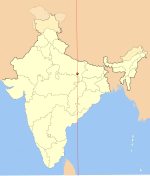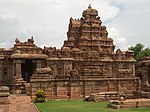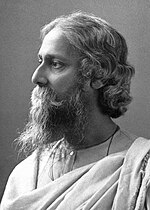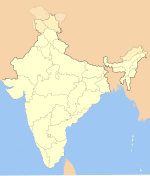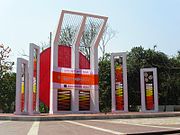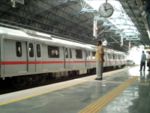Portal:India/Today's selected article/February 2007
historical reference. . Either the page is no longer relevant or consensus on its purpose has become unclear. To revive discussion, seek broader input via a forum such as the village pump |
Today's selected article for Indian Portal archive
2005 - 2006 - 2007
January - February - March - April - May - June - July - August - September - October - November - December
(Today is Wednesday, 26 June 2024; it is now 16:37 UTC)
| << | Today's selected articles for February 2007 | >> | ||||
|---|---|---|---|---|---|---|
| Su | Mo | Tu | We | Th | Fr | Sa |
| 1 | 2 | 3 | ||||
| 4 | 5 | 6 | 7 | 8 | 9 | 10 |
| 11 | 12 | 13 | 14 | 15 | 16 | 17 |
| 18 | 19 | 20 | 21 | 22 | 23 | 24 |
| 25 | 26 | 27 | 28 | |||
| An archive of Portal:India's selected articles that appeared on the Portal:India | ||||||
- February 1
historical reference. . Either the page is no longer relevant or consensus on its purpose has become unclear. To revive discussion, seek broader input via a forum such as the village pump |
historical reference. . Either the page is no longer relevant or consensus on its purpose has become unclear. To revive discussion, seek broader input via a forum such as the village pump |
Adi Shankara toured
Recently appeared:
- February 2
historical reference. . Either the page is no longer relevant or consensus on its purpose has become unclear. To revive discussion, seek broader input via a forum such as the village pump |
historical reference. . Either the page is no longer relevant or consensus on its purpose has become unclear. To revive discussion, seek broader input via a forum such as the village pump |
The city is the State Capital and houses several Central and State Government offices, organizations and companies. Apart from being the political nerve center of
Recently appeared:
- February 3
historical reference. . Either the page is no longer relevant or consensus on its purpose has become unclear. To revive discussion, seek broader input via a forum such as the village pump |
historical reference. . Either the page is no longer relevant or consensus on its purpose has become unclear. To revive discussion, seek broader input via a forum such as the village pump |
Recently appeared:
- February 4
historical reference. . Either the page is no longer relevant or consensus on its purpose has become unclear. To revive discussion, seek broader input via a forum such as the village pump |
historical reference. . Either the page is no longer relevant or consensus on its purpose has become unclear. To revive discussion, seek broader input via a forum such as the village pump |
The
The Fundamental Rights are defined as basic
Recently appeared: Buddhist art – Thiruvananthapuram – Adi Shankara
- February 5
historical reference. . Either the page is no longer relevant or consensus on its purpose has become unclear. To revive discussion, seek broader input via a forum such as the village pump |
historical reference. . Either the page is no longer relevant or consensus on its purpose has become unclear. To revive discussion, seek broader input via a forum such as the village pump |
Recently appeared:
- February 6
historical reference. . Either the page is no longer relevant or consensus on its purpose has become unclear. To revive discussion, seek broader input via a forum such as the village pump |
historical reference. . Either the page is no longer relevant or consensus on its purpose has become unclear. To revive discussion, seek broader input via a forum such as the village pump |
Indian Standard Time is calculated on the basis of 82.5 °E longitude which just west of the town of
Recently appeared:
- February 7
historical reference. . Either the page is no longer relevant or consensus on its purpose has become unclear. To revive discussion, seek broader input via a forum such as the village pump |
historical reference. . Either the page is no longer relevant or consensus on its purpose has become unclear. To revive discussion, seek broader input via a forum such as the village pump |
Recently appeared:
- February 8
historical reference. . Either the page is no longer relevant or consensus on its purpose has become unclear. To revive discussion, seek broader input via a forum such as the village pump |
historical reference. . Either the page is no longer relevant or consensus on its purpose has become unclear. To revive discussion, seek broader input via a forum such as the village pump |
Recently appeared:
- February 9
historical reference. . Either the page is no longer relevant or consensus on its purpose has become unclear. To revive discussion, seek broader input via a forum such as the village pump |
historical reference. . Either the page is no longer relevant or consensus on its purpose has become unclear. To revive discussion, seek broader input via a forum such as the village pump |
Recently appeared: Fundamental Rights, Directive Principles and Fundamental Duties of India – Muhammad Iqbal – Indian Standard Time
- February 10
historical reference. . Either the page is no longer relevant or consensus on its purpose has become unclear. To revive discussion, seek broader input via a forum such as the village pump |
historical reference. . Either the page is no longer relevant or consensus on its purpose has become unclear. To revive discussion, seek broader input via a forum such as the village pump |
Red rain in Kerala was a phenomenon observed sporadically from 25 July to 23 September 2001 in the southern Indian state of Kerala. Heavy downpours occurred in which the rain was primarily red, staining clothes and appearing like blood. Yellow, green, and black rains were also reported.
It was initially suspected that the rains were coloured by fallout from a hypothetical meteor burst, but the Government of India commissioned a study which found the rains had been coloured by spores from a locally prolific aerial algae. Then in early 2006, the coloured rains of Kerala suddenly rose to worldwide attention after media reports of an extraordinary theory that the coloured particles are extraterrestrial cells, proposed by Godfrey Louis and Santhosh Kumar of the Mahatma Gandhi University in Kottayam. (more...)
Recently appeared: Lothal – Fundamental Rights, Directive Principles and Fundamental Duties of India – Muhammad Iqbal
- February 11
historical reference. . Either the page is no longer relevant or consensus on its purpose has become unclear. To revive discussion, seek broader input via a forum such as the village pump |
historical reference. . Either the page is no longer relevant or consensus on its purpose has become unclear. To revive discussion, seek broader input via a forum such as the village pump |
Recently appeared: Red rain in Kerala – Lothal – Fundamental Rights, Directive Principles and Fundamental Duties of India
- February 12
historical reference. . Either the page is no longer relevant or consensus on its purpose has become unclear. To revive discussion, seek broader input via a forum such as the village pump |
historical reference. . Either the page is no longer relevant or consensus on its purpose has become unclear. To revive discussion, seek broader input via a forum such as the village pump |
The )
Recently appeared: Satyajit Ray – Red rain in Kerala – Lothal
- February 13
historical reference. . Either the page is no longer relevant or consensus on its purpose has become unclear. To revive discussion, seek broader input via a forum such as the village pump |
historical reference. . Either the page is no longer relevant or consensus on its purpose has become unclear. To revive discussion, seek broader input via a forum such as the village pump |
The
Recently appeared: Chalukya dynasty – Satyajit Ray – Red rain in Kerala
- February 14
historical reference. . Either the page is no longer relevant or consensus on its purpose has become unclear. To revive discussion, seek broader input via a forum such as the village pump |
historical reference. . Either the page is no longer relevant or consensus on its purpose has become unclear. To revive discussion, seek broader input via a forum such as the village pump |
The region of
With the decline of the three ancient dynasties during the fourteenth century, the
Recently appeared: Economy of India – Chalukya dynasty – Satyajit Ray
- February 15
historical reference. . Either the page is no longer relevant or consensus on its purpose has become unclear. To revive discussion, seek broader input via a forum such as the village pump |
historical reference. . Either the page is no longer relevant or consensus on its purpose has become unclear. To revive discussion, seek broader input via a forum such as the village pump |
Born to a family which had earlier been involved in
Recently appeared: History of Tamil Nadu – Economy of India – Chalukya dynasty
- February 16
historical reference. . Either the page is no longer relevant or consensus on its purpose has become unclear. To revive discussion, seek broader input via a forum such as the village pump |
historical reference. . Either the page is no longer relevant or consensus on its purpose has become unclear. To revive discussion, seek broader input via a forum such as the village pump |
The
The Hoysala rulers were originally hill peoples of
The Hoysala era was an important period in the development of art, architecture, and religion in
Recently appeared: Bhagat Singh – History of Tamil Nadu – Economy of India
- February 17
historical reference. . Either the page is no longer relevant or consensus on its purpose has become unclear. To revive discussion, seek broader input via a forum such as the village pump |
historical reference. . Either the page is no longer relevant or consensus on its purpose has become unclear. To revive discussion, seek broader input via a forum such as the village pump |
The
Recently appeared:
- February 18
historical reference. . Either the page is no longer relevant or consensus on its purpose has become unclear. To revive discussion, seek broader input via a forum such as the village pump |
historical reference. . Either the page is no longer relevant or consensus on its purpose has become unclear. To revive discussion, seek broader input via a forum such as the village pump |
)
Recently appeared:
- February 19
historical reference. . Either the page is no longer relevant or consensus on its purpose has become unclear. To revive discussion, seek broader input via a forum such as the village pump |
historical reference. . Either the page is no longer relevant or consensus on its purpose has become unclear. To revive discussion, seek broader input via a forum such as the village pump |
)
Recently appeared:
- February 20
historical reference. . Either the page is no longer relevant or consensus on its purpose has become unclear. To revive discussion, seek broader input via a forum such as the village pump |
historical reference. . Either the page is no longer relevant or consensus on its purpose has become unclear. To revive discussion, seek broader input via a forum such as the village pump |
The
Much of the war was fought by the countries' land forces in the region of Kashmir and along the
Recently appeared: Sikkim – Mahatma Gandhi – Indian Institutes of Technology
- February 21
historical reference. . Either the page is no longer relevant or consensus on its purpose has become unclear. To revive discussion, seek broader input via a forum such as the village pump |
historical reference. . Either the page is no longer relevant or consensus on its purpose has become unclear. To revive discussion, seek broader input via a forum such as the village pump |
Recently appeared:
- February 22
historical reference. . Either the page is no longer relevant or consensus on its purpose has become unclear. To revive discussion, seek broader input via a forum such as the village pump |
A
Recently appeared:
- February 23
historical reference. . Either the page is no longer relevant or consensus on its purpose has become unclear. To revive discussion, seek broader input via a forum such as the village pump |
historical reference. . Either the page is no longer relevant or consensus on its purpose has become unclear. To revive discussion, seek broader input via a forum such as the village pump |
Recently appeared:
- February 24
historical reference. . Either the page is no longer relevant or consensus on its purpose has become unclear. To revive discussion, seek broader input via a forum such as the village pump |
historical reference. . Either the page is no longer relevant or consensus on its purpose has become unclear. To revive discussion, seek broader input via a forum such as the village pump |
In India, where the office of the President is largely
Recently appeared: Black pepper – Rabindranath Tagore – Mumbai
- February 25
historical reference. . Either the page is no longer relevant or consensus on its purpose has become unclear. To revive discussion, seek broader input via a forum such as the village pump |
historical reference. . Either the page is no longer relevant or consensus on its purpose has become unclear. To revive discussion, seek broader input via a forum such as the village pump |
The
Recently appeared: K. R. Narayanan – Black pepper – Rabindranath Tagore
- February 26
historical reference. . Either the page is no longer relevant or consensus on its purpose has become unclear. To revive discussion, seek broader input via a forum such as the village pump |
historical reference. . Either the page is no longer relevant or consensus on its purpose has become unclear. To revive discussion, seek broader input via a forum such as the village pump |
Bengali or Bangla (বাংলা, Bengali pronunciation:
Recently appeared: Political integration of India – K. R. Narayanan – Black pepper
- February 27
historical reference. . Either the page is no longer relevant or consensus on its purpose has become unclear. To revive discussion, seek broader input via a forum such as the village pump |
historical reference. . Either the page is no longer relevant or consensus on its purpose has become unclear. To revive discussion, seek broader input via a forum such as the village pump |
Recently appeared: Bengali language – Political integration of India – K. R. Narayanan
- February 28
historical reference. . Either the page is no longer relevant or consensus on its purpose has become unclear. To revive discussion, seek broader input via a forum such as the village pump |
historical reference. . Either the page is no longer relevant or consensus on its purpose has become unclear. To revive discussion, seek broader input via a forum such as the village pump |
Recently appeared: Norman Borlaug – Bengali language – Political integration of India
Today's selected article for Indian Portal archive
2005 - 2006 - 2007
January - February - March - April - May - June - July - August - September - October - November - December
(Today is Wednesday, 26 June 2024; it is now 16:37 UTC)



